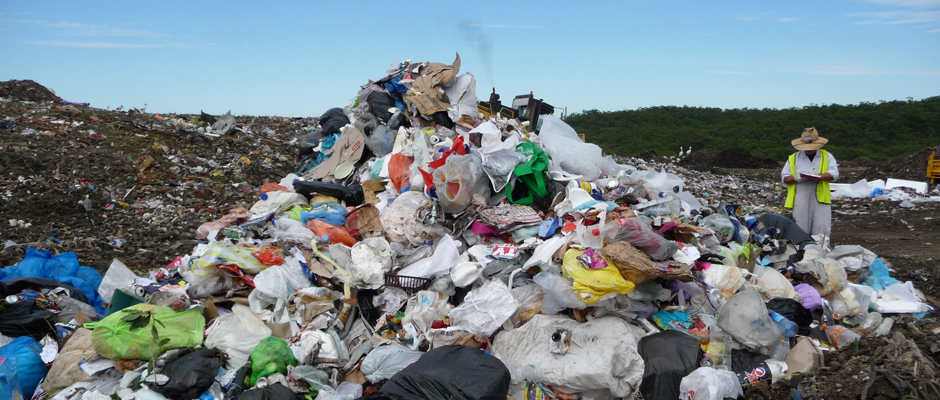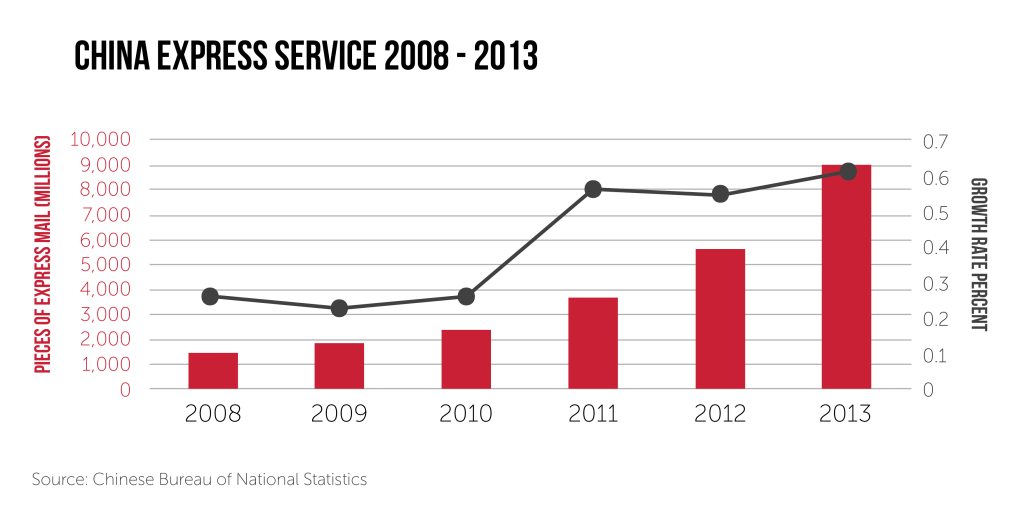On Monday, we addressed the rise of China’s consumer waste industry. One stream outlined was packaging, an area of waste that is facing challenges along its supply chain. Here we delve deeper into the topic outlining the challenges and opportunities.
Synonymous with consumer goods, packaging represents a particular waste stream that, given greater affluence and purchasing power, will grow. Packaging, of course, plays a vital roll in a number of product areas: it maintains its integrity, can articulate the brand’s messaging, and increase its lifetime. But in a country well known for its excessive packaging, with 300 million more consumer’s predicted to head to the cities by 2025, and their individual worth rising, how can the inevitable rise in the waste stream be managed in China?

One area that can be pointed to is the public waste services run by government and local authorities that provide the infrastructure for its disposal. It is undeniable that a larger, more efficiently run system will allow for better management and help alleviate the negative externalities associated with waste. But in reality, although this can provide a stopgap approach, with a consistently growing stream it is inevitable that its capacity will be continually tested and endless additions will not provide answer. Instead, addressing other areas of the industry, such as the sustainable nature of the packaging itself, will provide longer-term solution.
A specific area of packaging growth has come through the rise of e-commerce; its rise in China has been huge over the past 10 years. Unlike in-store transactions all e-commerce purchases require additional packaging at the delivery stage. The rise can be observed through the increase in fast delivery services in China.

As a result of this consumers come into contact with higher waste levels and subsequently individual household waste grows. This is the area where waste externalities will rise with poor management as the current waste system in China is not sufficient to account for production. Vast levels of plastic waste find their way into the oceans each year, environmental degradation results, and with poor management of landfills waste can become a real human health problem. With e-commerce shifting consumption channels away from the more traditional waste avenues, where waste is collected in maul or stores, the potential for greater externality will only increase.
In achieving scalability and sustainability, innovation must not only come from public sector infrastructure but private industry must understand the growing opportunity for innovatively packaged products. They can move beyond the current status quo to develop ways that will benefit both their brand and actors all along the value chain, whilst at the same time addressing issues related social, economic and environmental sustainability.
Along with tradition retail, the rise of e-commerce provides an opportunity for the development of innovative new materials and for brands to further connect with their growing consumer base. It can become an additional way to develop brand interaction and loyalty. It requires collaboration from all partners down the supply chain, incorporating packaging into design and design into packaging.
Here we outline 5 ways that opportunity can be realised, whilst maintaining sustainability at the core of development:
Design for and encourage continued and alternative reuse
Companies should now see beyond a products packaging as simply that. It should be seen as an opportunity to have your consumer interact, not only your product but also the packaging itself. Packaging reuse or upcycling acts to minimise a company’s contribution to the waste stream whilst increasing packaging’s usability within the home. 5Mimitos, an online toy retail store, achieves this by encouraging second-life e-commerce packaging use by designing and promoting them as storage containers – developing sustainable behaviour whilst allow your brand image to become a mainstay in the home.
Implement packaging take back schemes
Packaging can be designed with second hand use in mind. Companies can encourage consumers to return packaging through price incentives. This could include loyalty points or coupons for further spending on company products. Implementation can be achieved by both the retail site themselves and their delivery partner.
Adopt composite materials – the development of eco-packaging
Within the circular economy there are two considered types of nutrients: technological and biological. Pure eco-packaging adopts the latter; this means that materials are made from natural sources and are completely biodegradable. For packaging producers, striving to find a material economically viable to fit these criteria would allow for vast reductions in waste and provide great benefit to the consumers and society. Ecovative Design, an American based packaging company, has achieved this through the development of a fully compostable packaging material grown purely from mycelium and agricultural waste. As a price competitive material it has developed a competitive advantage within the industry as a result of its core sustainable concepts.
Limit excessive material use
Wastefully packaged goods can pose a risk when providing for the modern consumer. Practically, people don’t want to dispose of unnecessary packaging but also as more environmentally conscious mindsets develop, rejection of such brands may result. Even if environmental mitigation is not a consumer’s first motivation, as is often the case, learning the positive impact of their purchasing decision will only increase utility and could lead to a more positive outlook for the product. For the producer, packaging reduction will act to decrease the amount of material required in their supply chain, reducing costs.
Partner with NGOs to develop education
Working with organizations who are committed to the issue of sustainable waste practice will allow a brand to become synonymous with the practice. Educating individuals in the advantages of waste minimization, providing concrete, real life examples will develop a more considered citizenship. Through this medium citizens will look towards more sustainable brands when making their purchasing decision and begin to drive the market in a sustainable direction.
These proactive actions are the kind of ideals that can be instilled within growing markets in order to minimize the level of waste products entering the stream. There is no quick solution to waste minimization but with effective design and consider retail, coupled with strong waste management infrastructure positive strides will result. Collaboration between all actors along the value chain is vital to the achievement of effective design, as one must understand the complexities of each area of production and disposal. If this is achieved it can provide positive solutions and opportunity for a move towards a more sustainable and circular industry.
